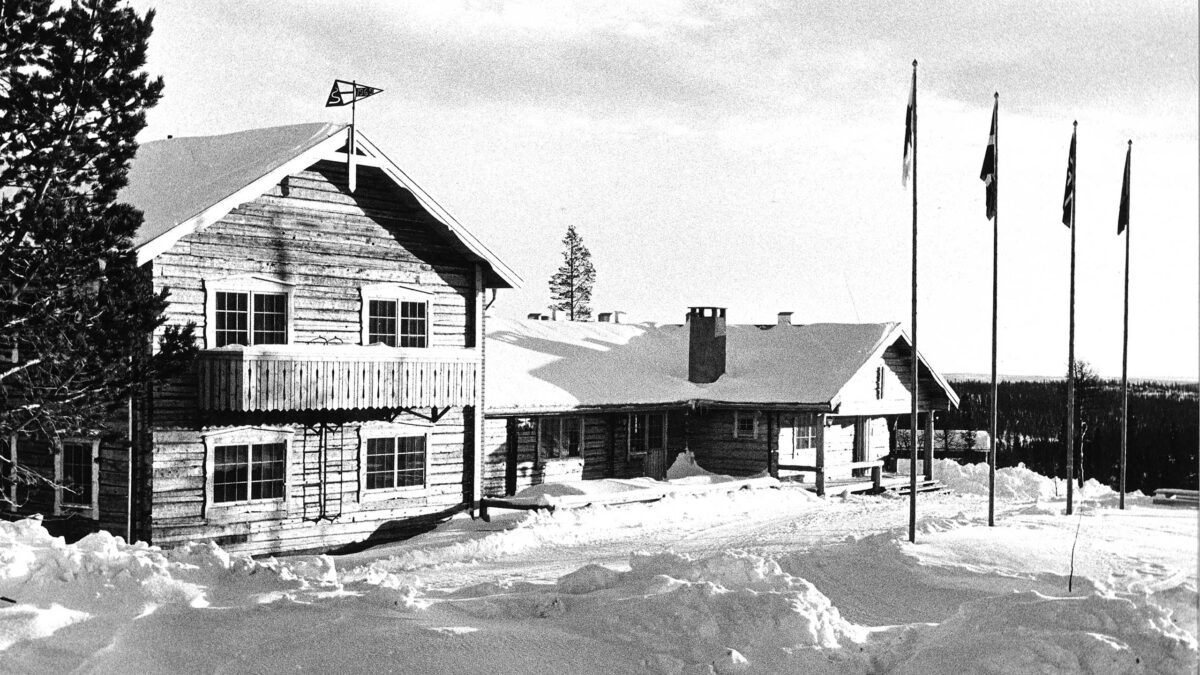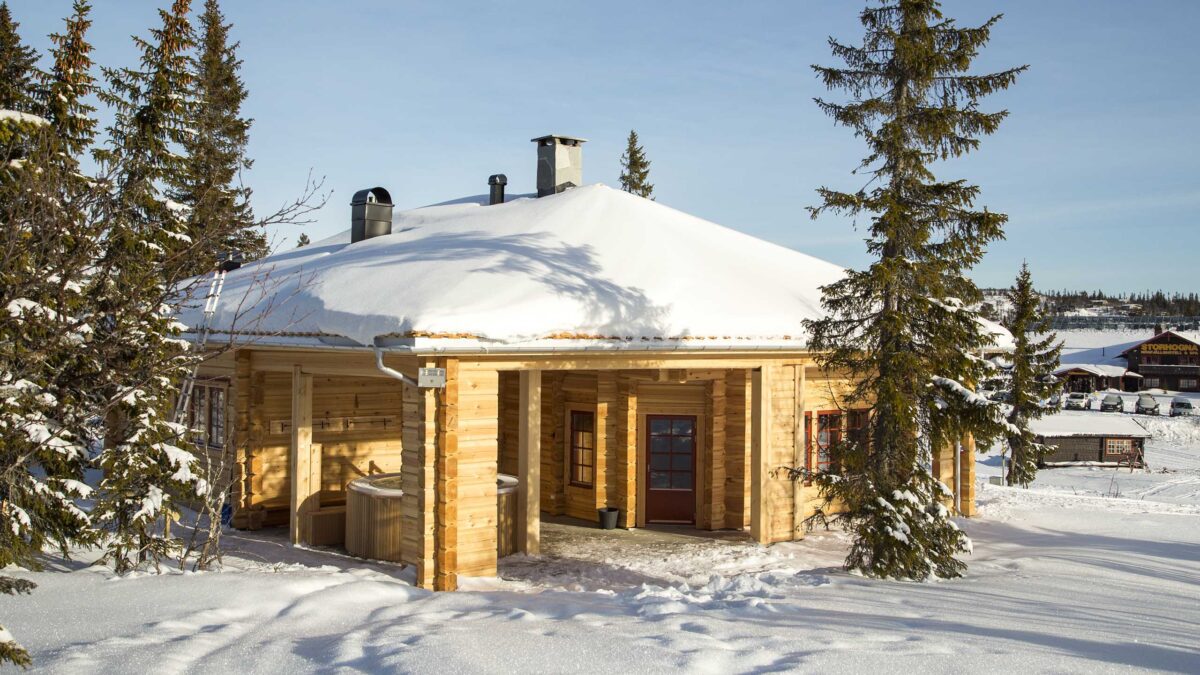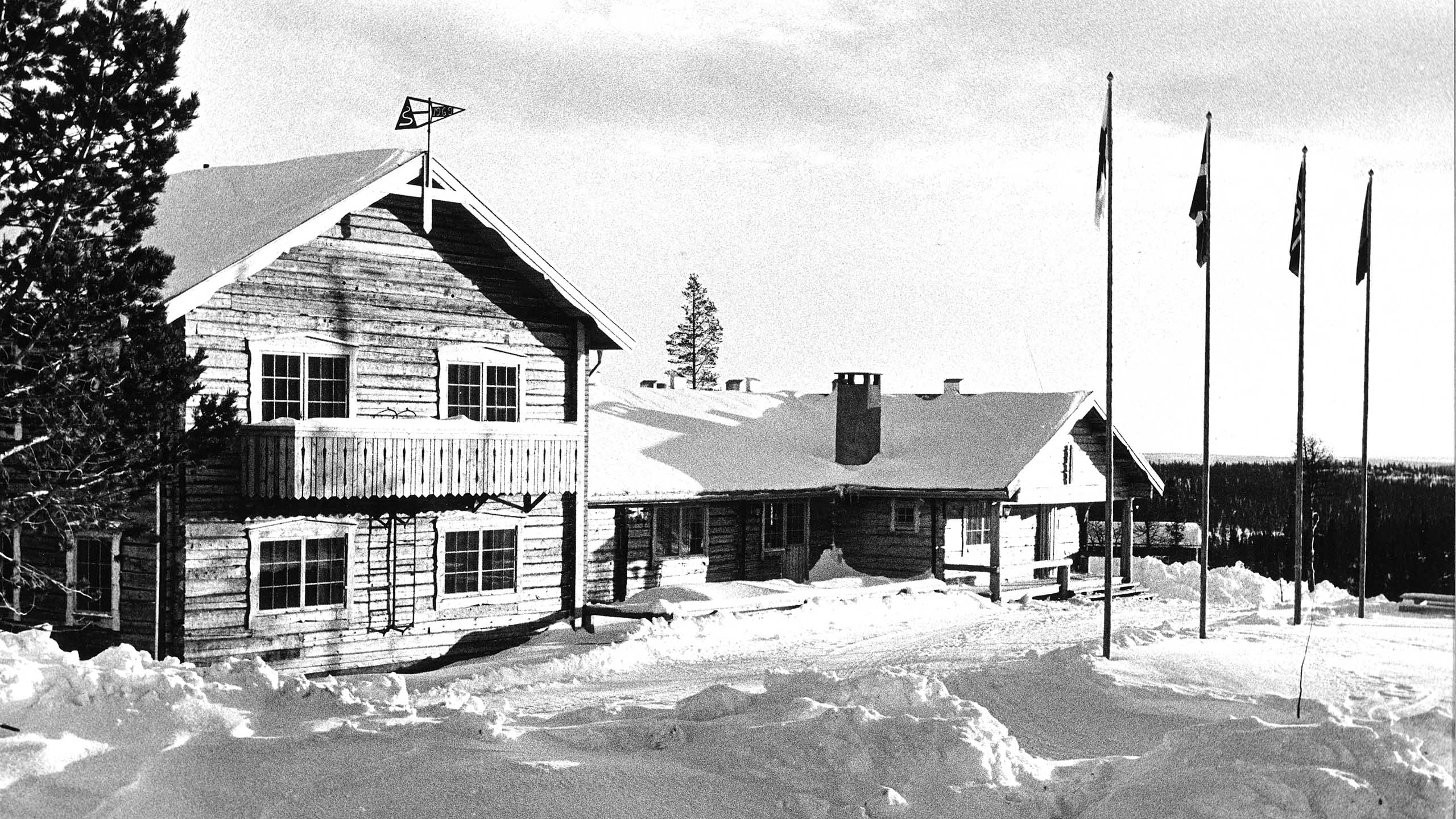
1965
Vemdalsskalet was the first in the area to have a lift back in the thirties.
Brundell & Jonsson took the hotel plans seriously and owned it between 1965 and 1970.
Kopparsalen was built in 1967, it actually consists of two lodges that were moved from Ytterhogdal and assembled. A kitchen was built and soon a lift was also built where the road up here now goes, from the caravan park up to the car park. The valley lift. They also built the Storhogdal lift from the hotel up to the top, the foundation is at the top.
In the same year, 1967, the timber frames were lifted and they dug out a cellar, Kalle's cellar, under Kopparsalen, the masses were laid around what is now the pond. The rest of the rubble was given to the campsite.
In 1968-69 Hackåsgården was added, another lodge was moved, this time from Hackås and then public areas were also built outside Kopparsalen with a library, a fireplace room, an office and 4 bedrooms upstairs.
The reception and conference room, now the Wellness Centre, were added after that. The reception also housed an Ica store.

1970
Storhogna was bought in 1970 by Nils Lindgren who had started both Skalet and Björnrike. Nils' son, Bertil, then took over Storhogna and owned it until 1999, during which time Nils built Ulrikagården with rooms 5-31, including the pentryn.
The spa area and 2 jacuzzis were added in the mid-70s, and 10 years later the first spa treatment room was installed and Storhogna started offering treatments. The first spa in the mountains!
The old sports centre was built and operated from 1986-2016. The new sports centre was built in 2017.
In 1989, our beautiful Winter Garden, the swimming pool and the Lovisa Corridor with 16 double rooms were built. Ingvar Borg took it upon himself to do this construction. 15 people from the hotel were involved in the construction and in total there were at most 80 people involved. It started in May, the pool was built as well as the Lovisa corridor. Everything was finished in December except for the pool wall, which was added in January 1990.
All the trees came in a large lorry and were taken through a sluice. Cow dung, sand and bog soil were mixed and the trees were planted.
The garden has names for all the trees and plants. There is a stream running through the garden. The fish at the moment are only char from Ljusnan - 34 of them.
Bertil Lindgren, who owned Storhogna at the time, was initially dissatisfied with the garden, which he thought was too small.

1999
Mats Wallin bought the hotel in April 1999 and developed it further:
2000 - Built wine cellar, Showkitchen
2004 - Mountain sauna completed. Wood-fired sauna, relaxation room and fireplace - a snowball's throw from the hotel, it later burned down.
2006 - The hotel is named the 5th facility in Sweden to be certified by Vasaloppet.
2008-09 - The hotel is named Sweden's leading spa hotel by the World Travel Awards (the travel industry's equivalent of the Oscars).
Charlotte Mannerson and Anders Treschow acquired Storhogna högfjällshotell & Spa in 2010.
2015 - New mountain bivouac completed
2017 - Storhogna Sport & Event Centre is completed
2021 - Energy efficiency
2021 - Boules court and first bare ground season with summer opening
2021 - On 1 September 2021, Cibola Holding AB takes over ownership of Storhogna
Högfjällshotell & Spa. Cibola Holding already owns Frösö Park Hotel and Dalecarlia.
2022 - Storhogna gets a new website
2022 - Pop up restaurant in the old sun side - summer 2022 Deli & Pizzeria
2024- SkiStar Vemdalen operates the Sporthuset from season 24/25 with their concept SkiStar Concepts Store
The hotel was originally called Karl den XI Värdshus, and in 1983-1984 it was called Karl den XI Högfjällshotell. Since the mid-90s it became Storhogna Högfjällshotell.
Charles XI ordered in 1686 that the road should be repaired when he was going to inspect a fortress in Järpen and Långå, the road went from Järpen, past Klövsjön and when he rode past, the road was also named after him. Erik Dahlberg (conference hall) was field marshal to Charles XI. Ulrika (Ulrikakorridoren) was Charles XI's wife.
Fettjantorpet - Spearheads and other flint objects have been found there. The Stone Age people probably travelled along the coast and into Ljungan. It was warm here after the last ice age and there were lots of fish in the lakes. Bertil Lindgren built a dance floor at Fettjan and had dances with fiddlers. Food and drink were consumed inside the croft. Storhogna has also had guided tours ending in Fettjan with lunch. It has mainly been relevant for conference groups. Fettjan means fat earth.
Samevistet was built by Brundell and Jonsson as an excursion destination in the sixties. It was taken over by private individuals who owned it until Storhogna Högfjällshotell bought it back in the 2000s. Samevistet is only open in winter when the mountain is frozen, as this is the only time you can bring goods up. There is no electricity or water connected. Gas and a generator are used, and the goods are kept cold in a storage room during the winter and all the water is brought up.

